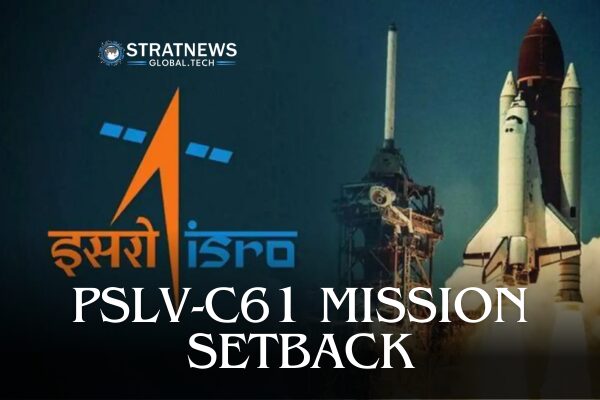PSLV-C61 Launch Delay Marks a Minor Hurdle in ISRO’s Strong Record
On May 18, the Indian Space Research Organisation (ISRO) launched the PSLV-C61 mission from the Satish Dhawan Space Centre in Sriharikota. The objective was to place the EOS-09 Earth observation satellite into a sun-synchronous polar orbit using the PSLV-C61. While the initial phases of the launch progressed as expected, an anomaly during the third stage prevented the mission from achieving its intended orbit.
ISRO has initiated a detailed investigation into the issue. These reviews are standard practice and vital for learning and improvement—an approach that has helped ISRO earn its reputation as one of the world’s most reliable space agencies.
Despite this setback, ISRO’s overall record remains exceptional. The PSLV (Polar Satellite Launch Vehicle) has long been a dependable workhorse, with a legacy of successful missions that have firmly established India as a leading spacefaring nation. One off-nominal event does not diminish that legacy. If anything, it underlines the complexity of spaceflight and the continuous need for innovation and refinement.
NISAR Mission and Human Spaceflight Take Centre Stage
Looking ahead, ISRO is preparing for the highly anticipated NASA-ISRO Synthetic Aperture Radar (NISAR) mission, a collaborative Earth science effort between India and the United States. Scheduled for launch in June 2025, NISAR will deliver critical data on ecosystems, ice sheets, and natural hazards—strengthening our understanding of climate change and environmental dynamics.
India’s space ambitions extend beyond satellite launches. Human spaceflight is gathering momentum. Group Captain Shubhanshu Shukla of the Indian Air Force is slated to pilot the Axiom Mission 4 (Ax-4) to the International Space Station (ISS), with liftoff targeted for June 8, next month. This milestone mission marks the first time an Indian will travel to the ISS and only the second time an Indian will journey into space, following Rakesh Sharma in 1984.
This mission didn’t go as planned, but setbacks are part of any space program. ISRO has a long history of learning from experience, and there’s no doubt they’ll take this as an opportunity to improve future missions.
Space Technology: The New Strategic Frontier
The growing strategic importance of space technology was highlighted by Dr. Srimathy Kesan, Founder and CEO of Space Kidz India. “The Gulf War of 1991 and the Kargil War of 1999 didn’t just shape battle outcomes—they revealed a silent but decisive player in modern warfare: satellite technology. Though different in geography and scale, these two conflicts drove home one truth—space is the new high ground.”
During the Gulf War, the U.S.-led coalition’s technological edge came from space. GPS satellites enabled unprecedented navigation, coordination, and precision. The conflict earned the moniker of the first “space war.” Iraq’s attempts to jam GPS signals, however, exposed vulnerabilities that spurred a global race for more resilient and advanced systems.
“Eight years later, on the snowy ridges of Kargil, India learned a painful lesson,” Kesan adds. “Denied access to US GPS data at a crucial moment, our troops had to rely on handheld receivers and manual calculations in some of the most unforgiving terrain on Earth. The experience exposed India’s technological dependence—and lit the spark for change. That spark became NAVIC (Navigation with Indian Constellation), our homegrown regional satellite navigation system. Fully operational since 2016, NAVIC now ensures that no foreign entity can dictate our military’s access to critical positioning data.”
Prime Minister Narendra Modi echoed this sentiment: “Geopolitical needs teach you that some countries can deny you the service… NAVIC is our technological answer to Kargil.”
Since then, satellite technology has revolutionized modern defence. Real-time surveillance, secure communications, early warning systems, and precision targeting now hinge on space-based infrastructure. While countries like the U.S., Russia, and China lead in military space assets, India has also significantly advanced. Establishing the Defence Space Agency, the successful anti-satellite (ASAT) test under Mission Shakti, and expanding ISR (Intelligence, Surveillance, and Reconnaissance) capabilities all mark India’s growing space power.
Innovation and Collaboration Drive India’s Space Growth
Yet India’s space journey is not just about national security—it is equally about exploration, innovation, and international collaboration.
Private space companies are reshaping the future of human spaceflight, and India is poised to play a central role. In May 2023, Axiom Mission 2 (Ax-2) made history by sending the first Saudi female astronauts to the ISS.
Two years later, Group Captain Shubhanshu Shukla will carry India’s aspirations into orbit aboard Ax-4.
This mission is more than symbolic—it bridges India’s indigenous Gaganyaanprogram with global partnerships, opening new frontiers for Indian astronauts.
Space has never been easy. Whether successful or not, every flight contributes to a deeper understanding that powers the next leap. With NISAR on the horizon and India’s first ISS-bound astronaut preparing for launch, the nation’s space journey continues—undaunted and determined.


